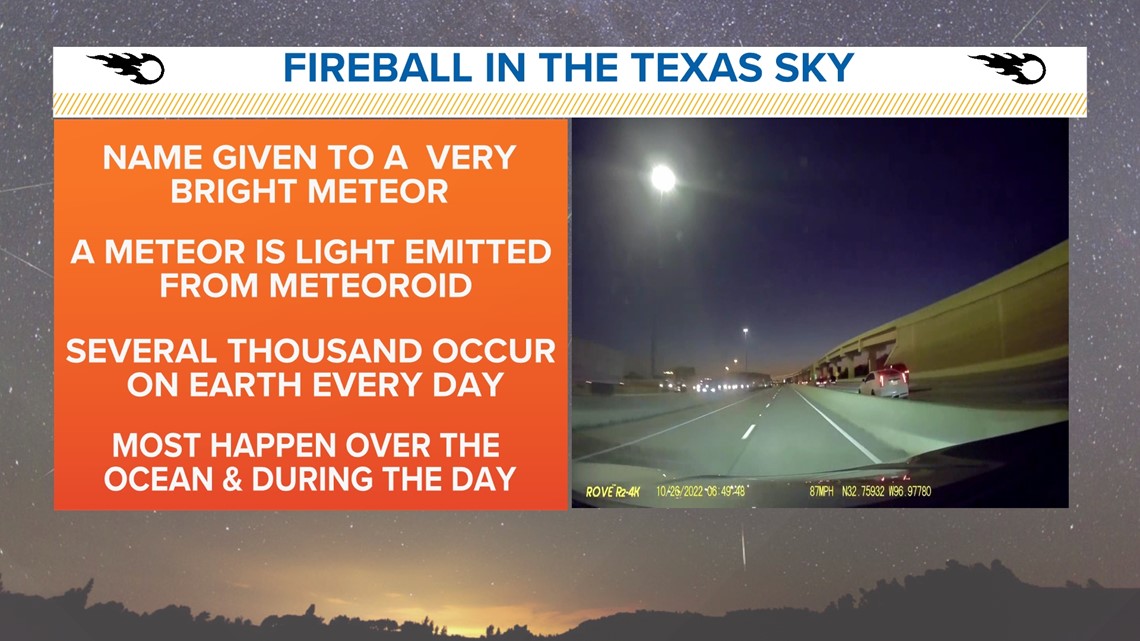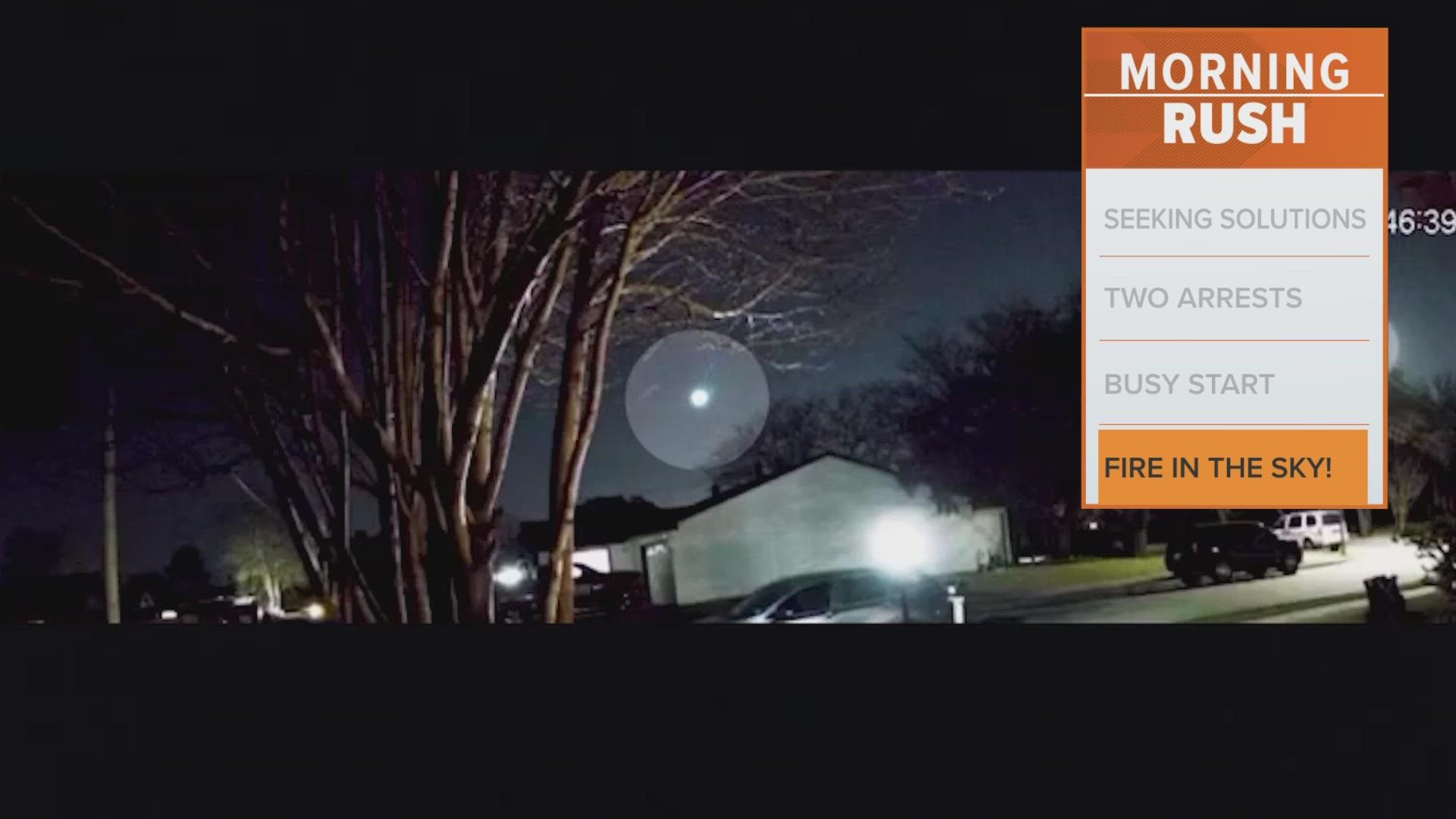DALLAS — The American Meteor Society had reports of a bright light spotted in the dark Texas sky on Tuesday, Jan. 10. Many of the reports were out of central Texas, but reports also came out of Houston and Dallas-Fort Worth.
A record of the logs can be found here.
WFAA received video of a similar event on Oct. 26, 2022 from Bonnie Grigsby, but it is a bit difficult to distinguish if it is a meteor or a fireball.
Here is the difference:
A fireball is a meteor that is brighter according to the American Meteor Society. On a scale of brightness, a fireball is brighter in our sky than the planet Venus.


This means all fireballs are meteors, but not all meteors are fireballs.
For reference, a meteor is the light seen when a meteoroid or asteroid (space debris) enters the earth's atmosphere. Most space debris burns up before getting even remotely close to the Earth's surface.
The American Meteor Society says several thousand meteors classified as fireballs enter the Earth's atmosphere every day. Most of these are over the oceans or rural areas and during the day, which is why most go unreported.
Meteors and fireballs are not always associated with meteor showers, but it does make it more likely to see one. Ideal conditions would be during a meteor shower peak, a clear sky, low moonlight and away from the city's light pollution.
The Quadrantids are the current meteors passing earth. The next meteor shower will be by The Lyrids which will peak April 23.

